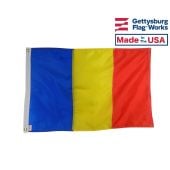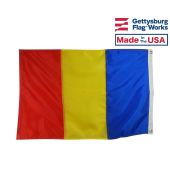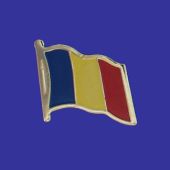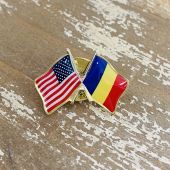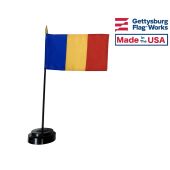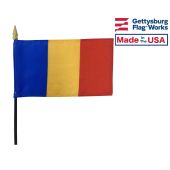Flag of Romania
Flag of Romania
Like many other European nations, Romania can trace the lineage of its flag back to the land's feudal lords. The colors found on Romania flags dominate many of the coats of arms associated with the lords and kings who ruled the lands that would later become part of Romania, which allows the flag's history to be traced back hundreds of years.
The flag of Romania is a vertical tricolour. It has vertical stripes of blue (hoist end), yellow (center) and red (fly end). The Constitution of Romania states: “The flag of Romania is tricolour; the colors are arranged vertically in the following order from the flagpole: blue, yellow, red". The proportions, shades of color as well as the flag protocol were established by law in 1994 and extended in 2001. The law specifies that the stripes of the national flag are cobalt blue, chrome yellow and vermilion red.
- Capital of Romania: Bucharest
- Area of Romania: 230,340 sq. km
- Languages used in Romania: Romanian (official), Hungarian, German
- Religions in Romania: Eastern Orthodox, Protestant, Roman Catholic, Muslim
Colors and Symbolism of Romania Flags
Modern Romania flags are horizontal tricolors of blue, yellow, and red. The association of those colors with Romania vastly predates the first time that they were given symbolic meanings, which occurred in 1821. The blue band was said to represent liberty, the yellow band was said to represent justice, and the red was said to stand for fraternity. Some sources say that the flag also represents a merger of the flags of Moldavia and Wallachia, but that is most likely a myth that arose some time after the flag was first designed rather than a goal of the flag's designer.
History of Romania Flags
The modern Romanian flag draws inspiration from the feudal banners of the lords who ruled in the region, but the first flag that represented all of Romania developed much later. The first flag that represented all of Romania was designed by the revolutionary movement that worked towards Romanian independence from foreign rule during the 19th century. The revolutionaries combined the region's feudal colors with a pattern that likely derived from the flag of revolutionary France to create their movement's banner.
Wallachia and Moldavia formed the union that would eventually become Romania in 1859. The union was not completely independent from the Ottoman Empire, but it had enough political autonomy to have its own flag, which had the same colors as the modern flag but used vertical stripes instead of horizontal bands.
That flag fell out of use when a communist government took power in Romania in 1947 and outlawed the old flag as a symbol of the Romanian monarchy. Unlike most communist governments that used a red flag as their symbol, the new government replaced the flag with a variant that used horizontal stripes and included the nation's seal. People who protested against the communist government during its later years famously cut the emblem out of the center of the flag, which created the modern design that would gain official recognition when the communist government left power.
